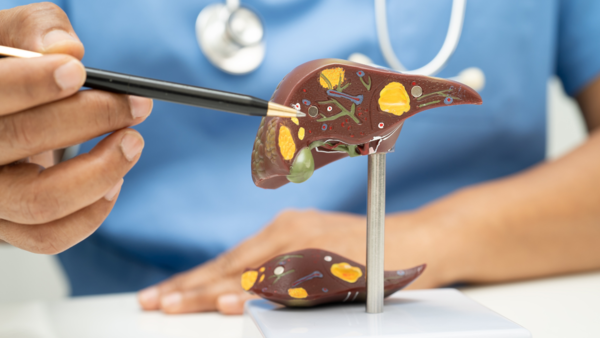Cancer is a life-threatening condition, but there are some health conditions that can increase your risk of the deadliest cancers. Gallbladder cancer is highly aggressive due to its silent progression, vague symptoms, and lack of routine screening, often leading to late diagnosis and poor survival rates. According to Globocan, 2022, India recorded 21,780 new cases, making it one of the most common biliary tract malignancies, with a five-year prevalence rate of 2.6 cases per 100,000 people. Since its symptoms mimic common digestive disorders like gallstones or liver disease, misdiagnosis is frequent, delaying timely intervention.
Risk factors for gallbladder cancer
Although gallbladder cancer can develop without any known risk factors, certain conditions significantly increase the likelihood of its occurrence:
Gallstones: The most common risk factor, as chronic inflammation from gallstones can lead to cancerous changes in the gallbladder lining. However, not all gallstones lead to cancer. In fact, the risk is relatively low, with only about 2-3% of cases potentially developing into cancer over time.
Obesity and poor diet: Excess body weight and high-fat, low-fiber diets contribute to gallstone formation, increasing the risk of gallbladder cancer.
Chronic Salmonella typhi infection: According to Dr. Kapil Goyal, Consultant Medical Oncology, Rajiv Gandhi Cancer Institute & Research Centre (RGCIRC), Niti Bagh, “Persistent infection from untreated typhoid bacteria has been associated with a higher risk. People who become chronic carriers of Salmonella Typhi may have the bacteria in their gallbladder, even without showing symptoms of typhoid fever. These carriers may not experience acute illness but can have ongoing, low-grade inflammation in the gallbladder, increasing the risk of gallbladder cancer.”
Age and gender: Women over 40 years old, particularly those with a history of gallstones, face a higher risk.
Environmental factors: Exposure to industrial chemicals, heavy metals, and genetic predisposition may also contribute.
Why does early diagnosis remain a challenge?
Gallbladder cancer is difficult to detect in its early stages because its symptoms resemble those of gallstones, liver disorders, or digestive issues. Many patients initially turn to alternative treatments for jaundice or abdominal pain, delaying crucial medical evaluation. Unlike breast or cervical cancer, there are no established screening programs for gallbladder cancer, making early detection uncommon.
Persistent upper abdominal pain, especially in the right upper quadrant, that does not subside can be an early warning sign. Unexplained weight loss and a persistent loss of appetite may also indicate an underlying issue. Jaundice, characterized by yellowing of the skin and eyes, often signals bile duct obstruction, which could be caused by a tumor. Additionally, abdominal swelling and fluid retention may suggest that cancer has spread to nearby organs. Dark urine and pale stools can also be a concerning symptom, indicating a possible bile duct blockage that requires urgent medical attention.
Early detection of these conditions
1. Ultrasound Imaging – Routine scans can help identify abnormalities, particularly in individuals with gallstones.
2. Histopathological Testing – Any gallbladder removed during surgery should be examined for cancer cells.
3. Liver Function Tests – Elevated bilirubin and liver enzyme levels may indicate underlying gallbladder or bile duct issues.

Treatment options for cancer
The effectiveness of treatment depends largely on how early the cancer is diagnosed. Surgery is the most effective treatment, but it is only an option for patients diagnosed in the early stages. A cholecystectomy (gallbladder removal surgery) is commonly performed for localized tumors, significantly improving survival chances. In cases where the cancer has spread, a partial liver or bile duct resection may also be necessary.
For advanced cases, chemotherapy, immunotherapy, and radiation therapy may help slow disease progression but are not curative. When surgery is not an option, palliative care focuses on symptom management and improving the patient’s quality of life. Due to the aggressive nature of gallbladder cancer, survival rates remain low, and most treatments aim to extend life rather than achieve a cure.


